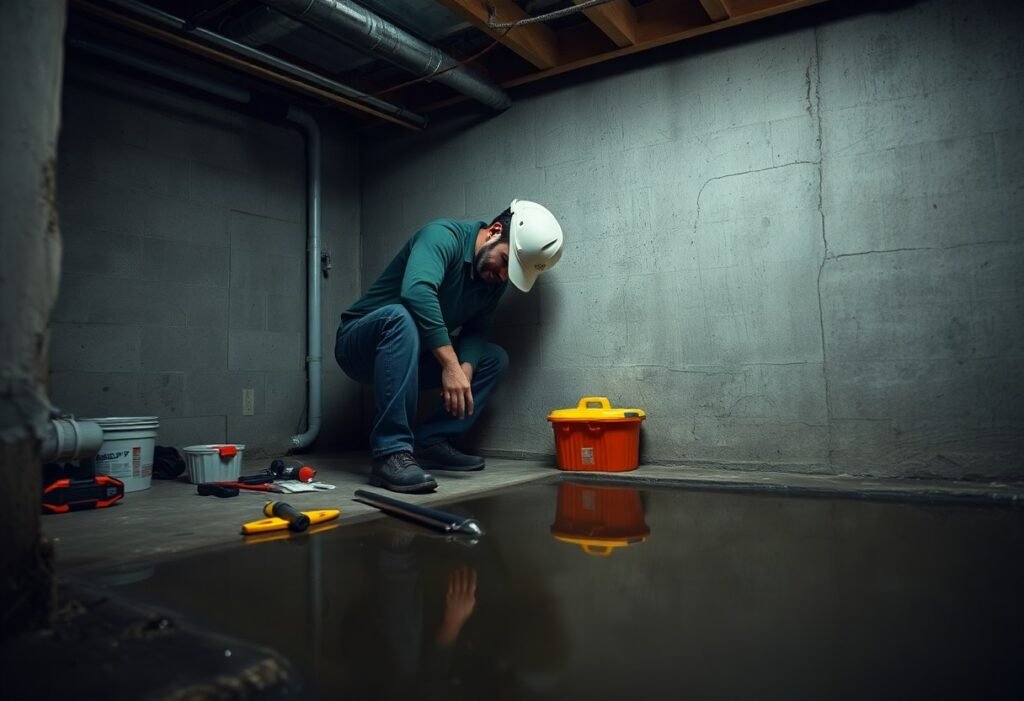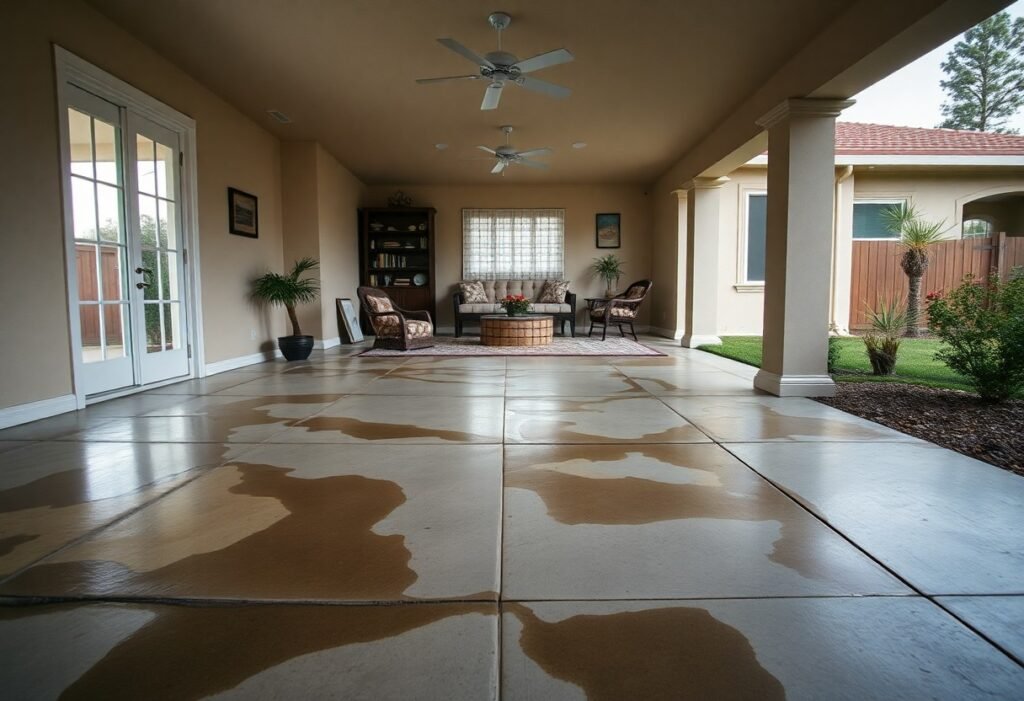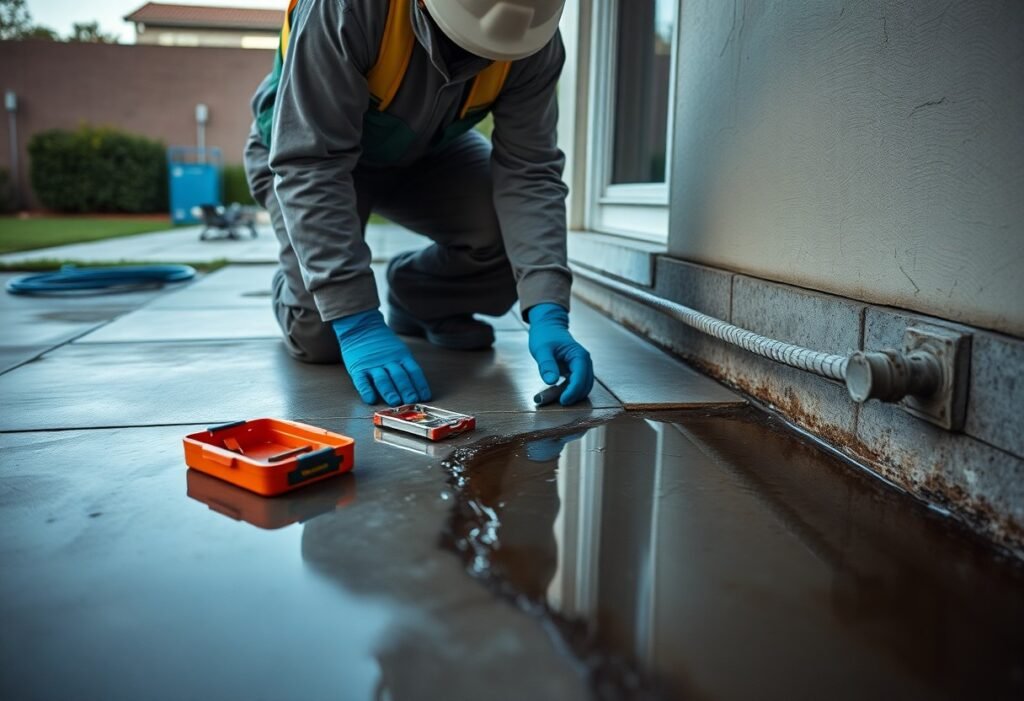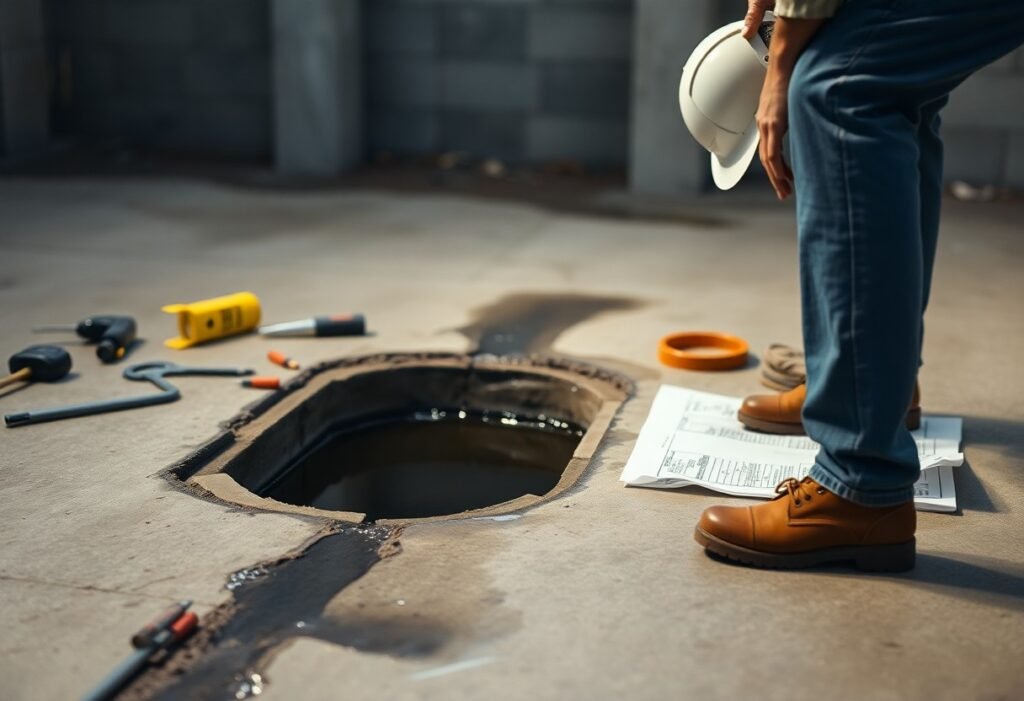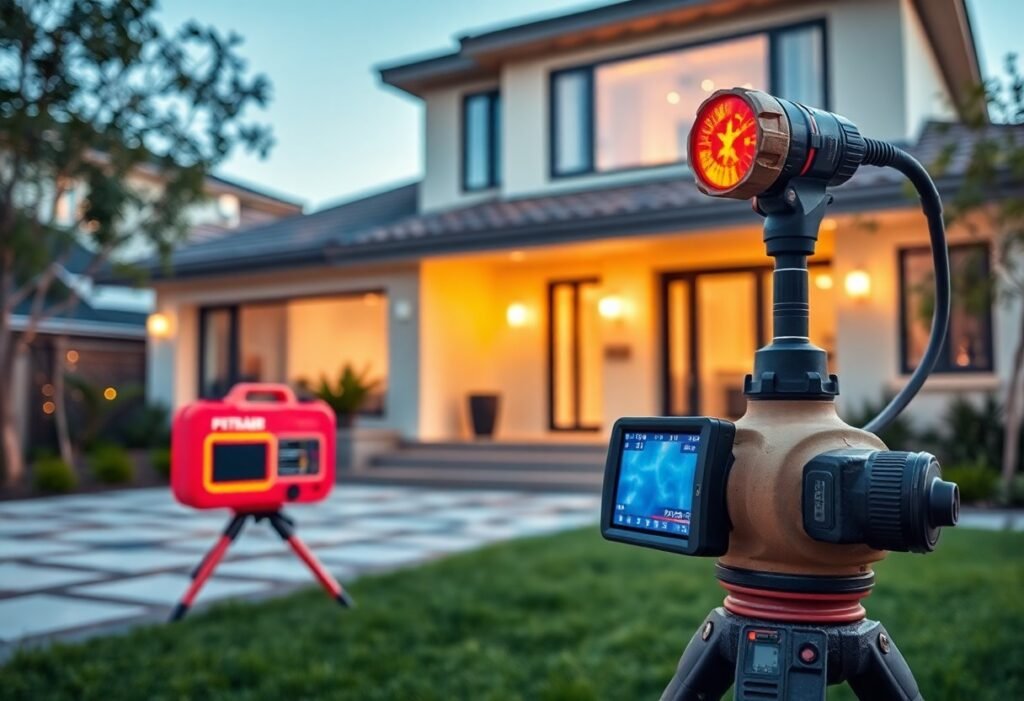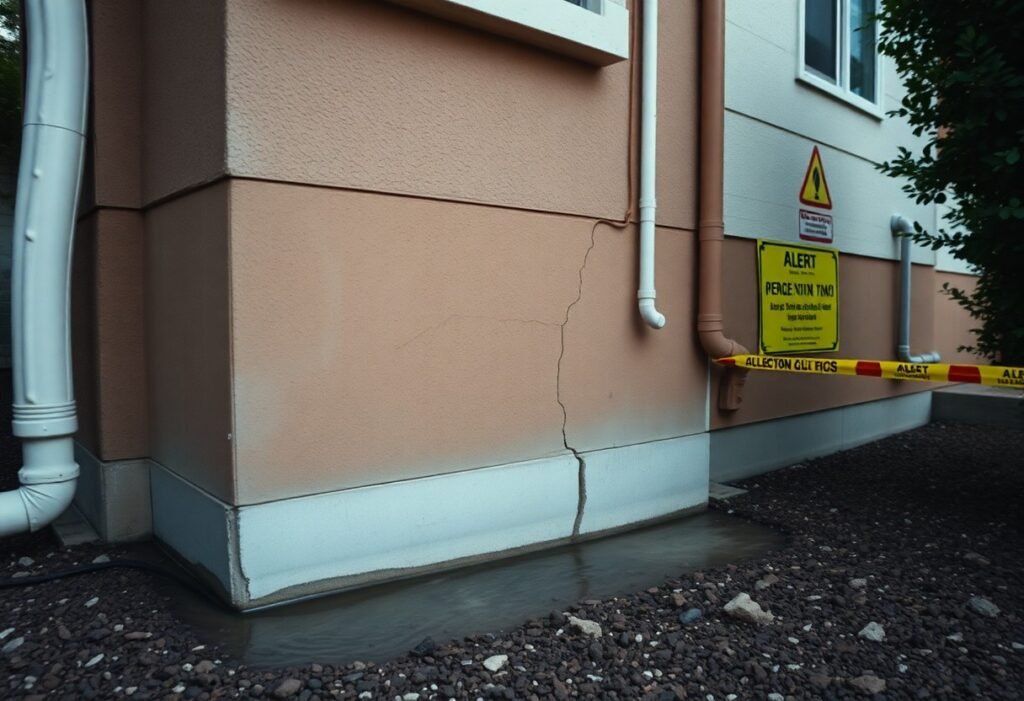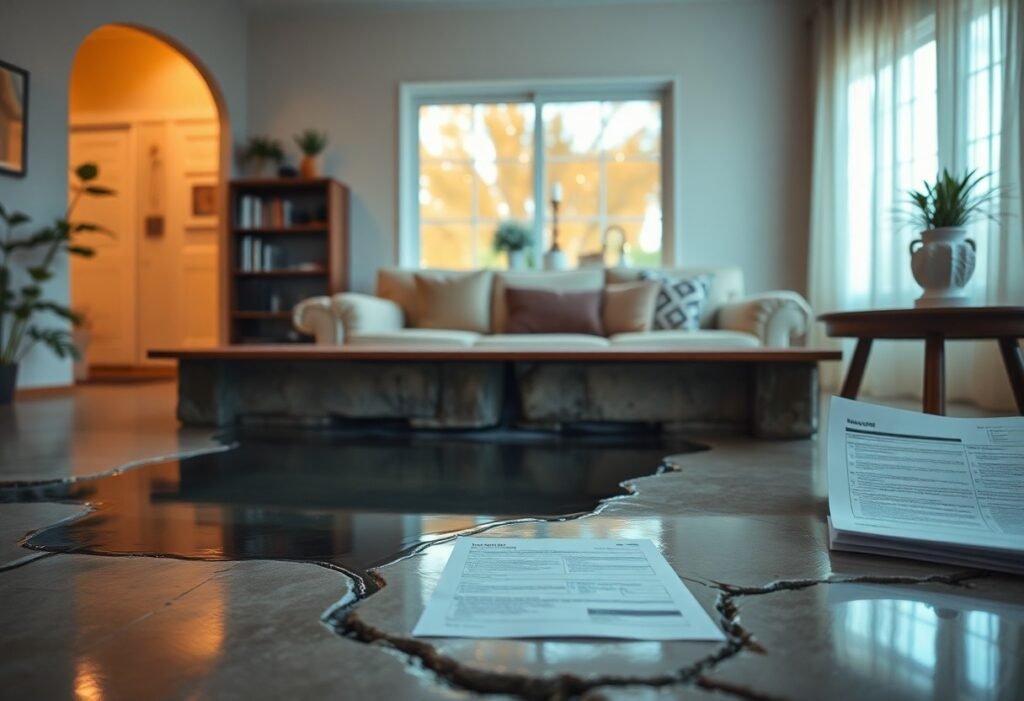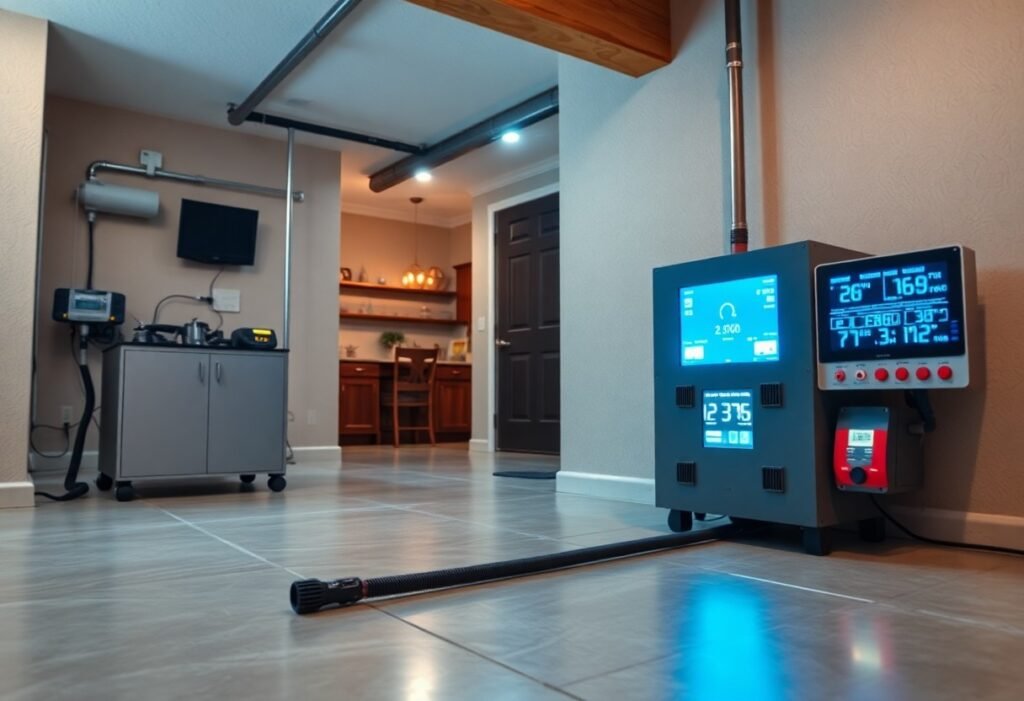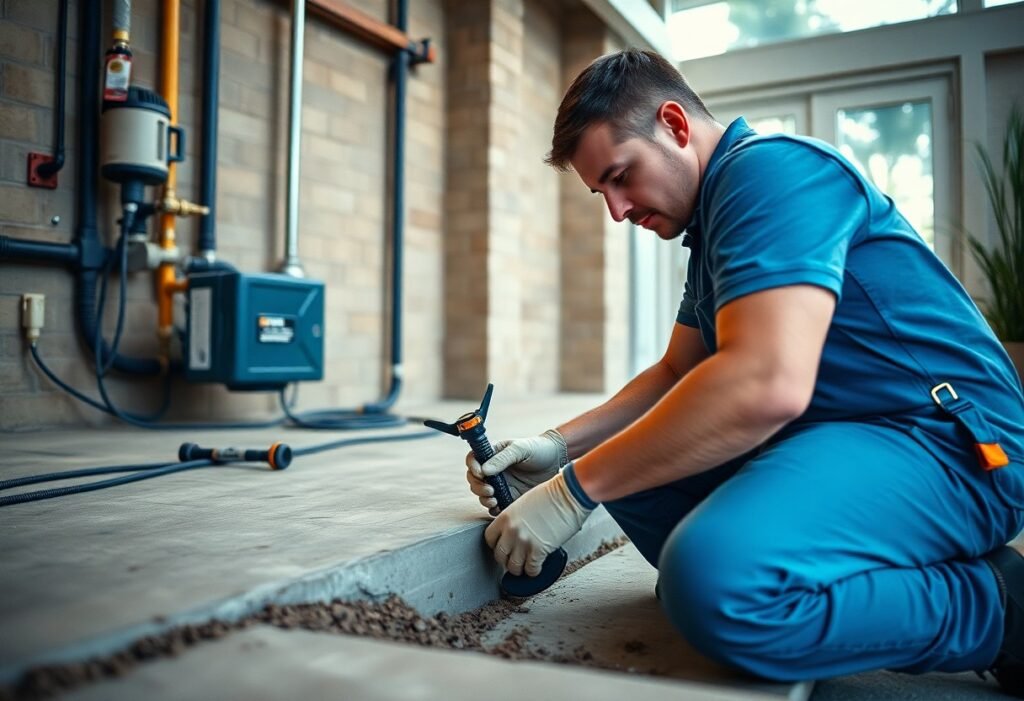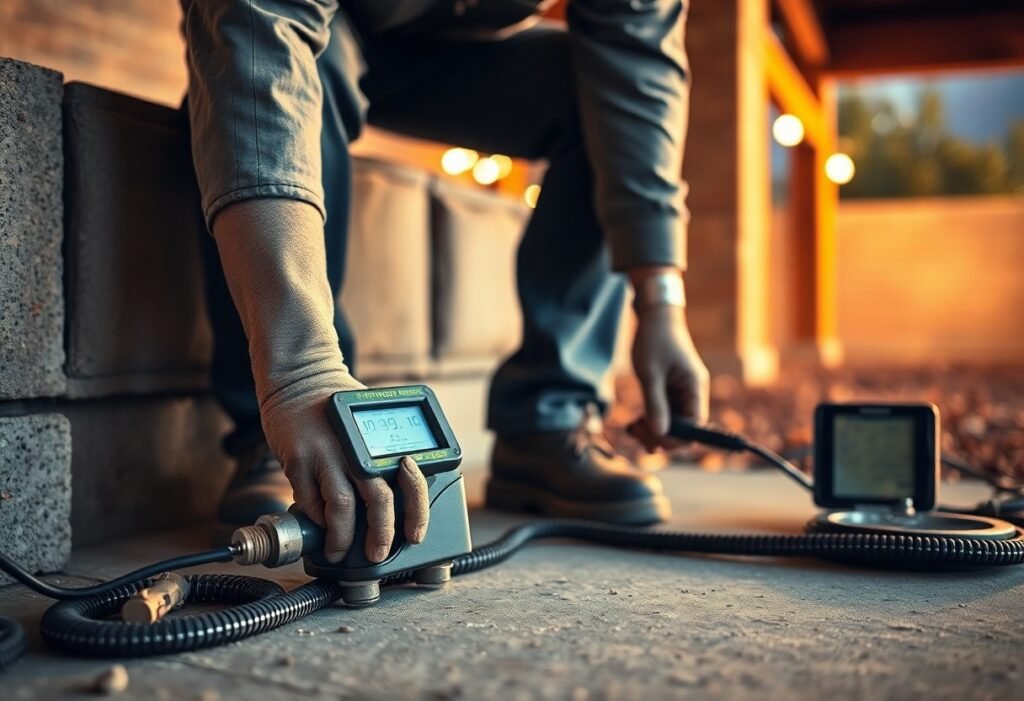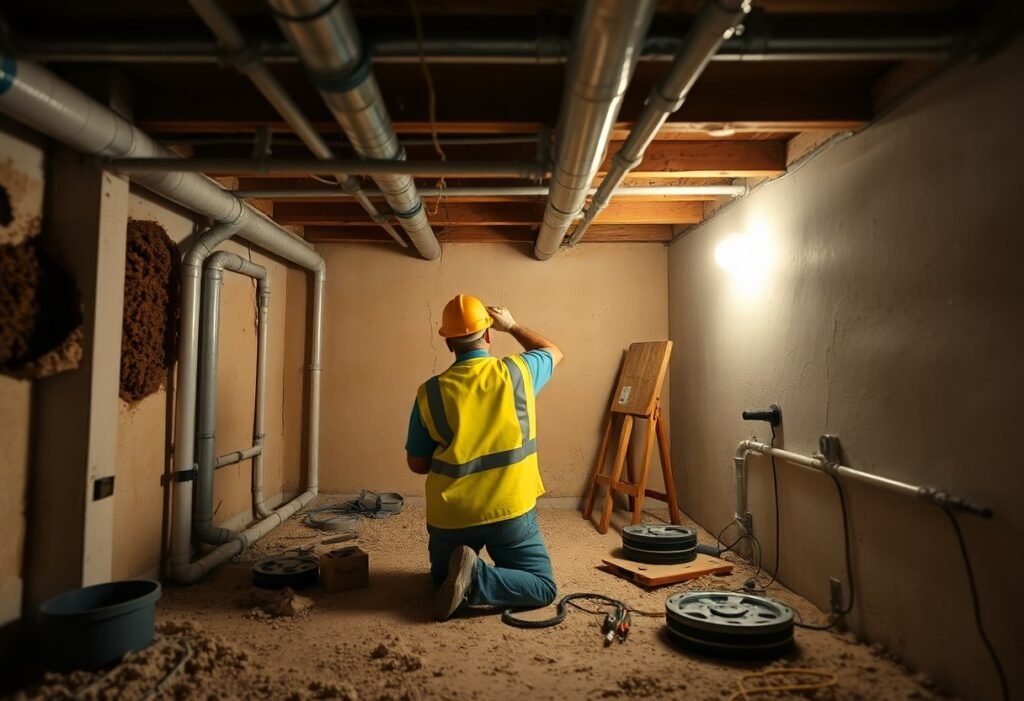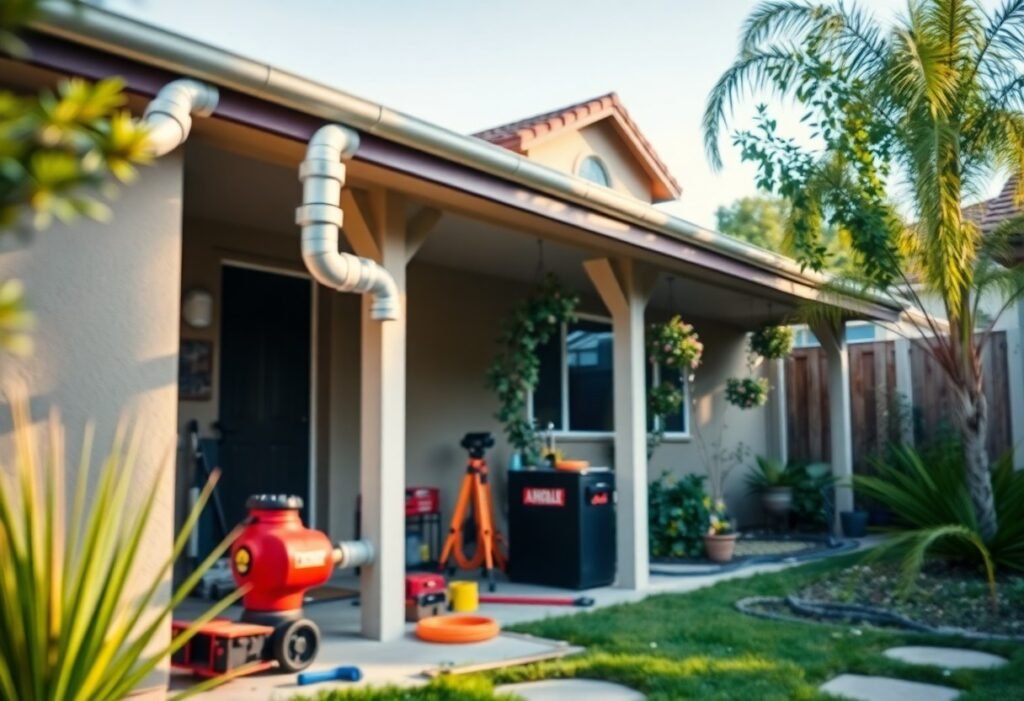Garden Grove’s Guide to Slab Leak Prevention & Professional Repair
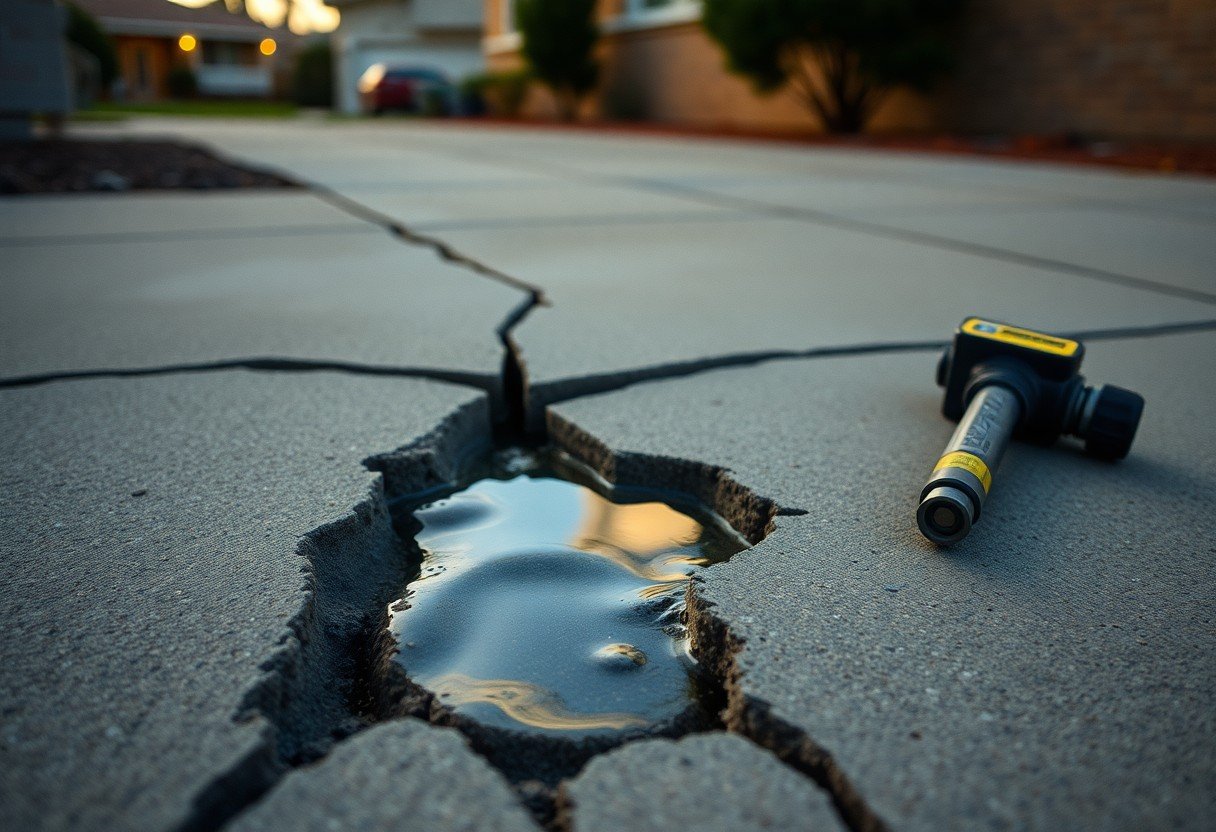
Repair and maintain your home by understanding the risks and signs of slab leaks, which can lead to severe damage if not addressed promptly. In this guide, you will learn effective techniques for preventing these leaks and ensuring the health of your property. Whether it’s regular inspections or understanding the key signs of leakage, taking proactive measures can save you time and money in the long run. When repairs are needed, seeking professional help is vital to ensure a thorough and lasting solution.
Key Takeaways:
- Regularly monitor your plumbing system for signs of leaks, such as unexplained water bills or damp spots in your home.
- Invest in high-quality materials and proper installation techniques for your plumbing to minimize the risk of slab leaks.
- Seek professional help for repairs and maintenance to ensure that any potential slab leaks are promptly addressed and resolved.
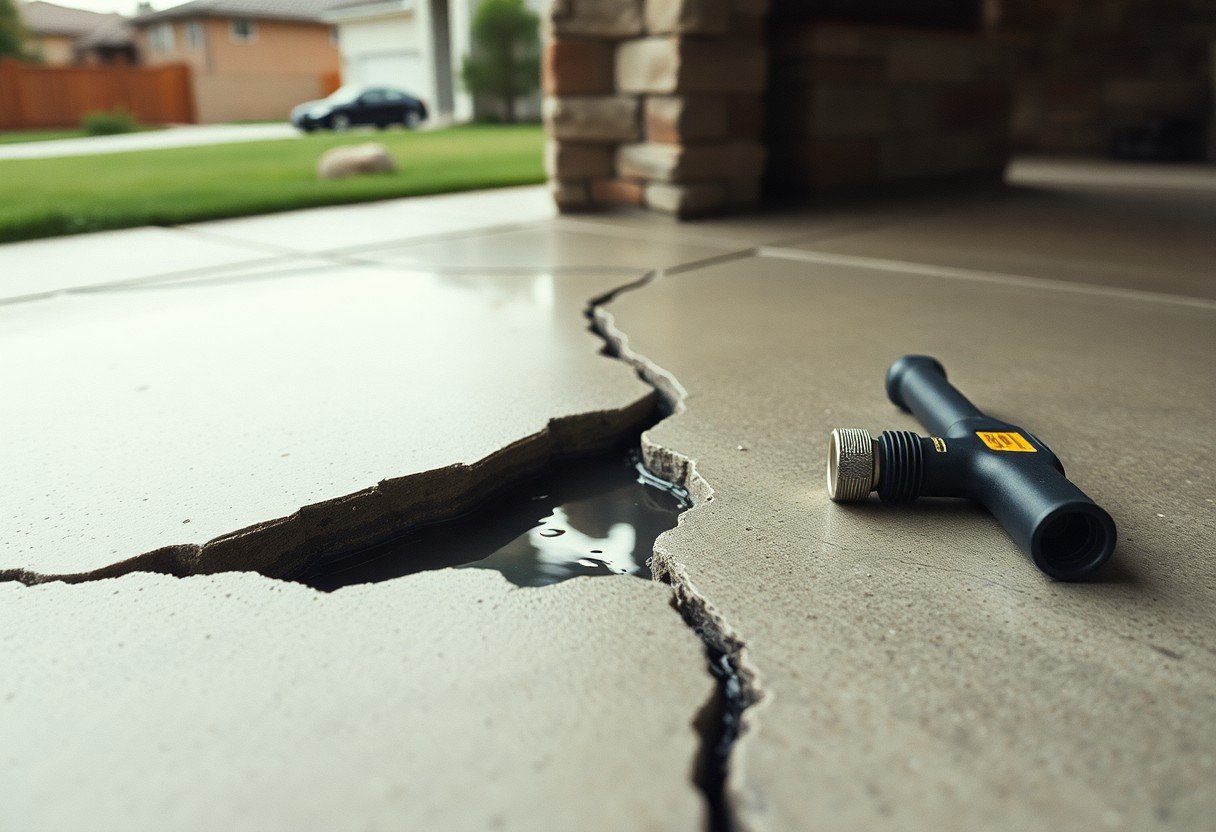
Decoding Slab Leaks: Symptoms and Early Indicators
Identifying the early signs of slab leaks can save you from extensive damage and costly repairs. Attention to specific symptoms in your home can help you catch these issues before they escalate. You might often overlook minor changes, but recognizing these indicators makes a significant difference in your ongoing home maintenance.
Unseen Signs: Water Accumulation and Changes in Flooring
Look for localized water accumulation on your floors or walls, as this may indicate a slab leak beneath surface materials. You may also observe changes in flooring texture or color, such as warped tiles or discoloration in carpets, suggesting water has infiltrated your foundation area.
The Role of Sound: Listening for Suspicious Noises
Pay attention to unusual sounds that could imply plumbing issues beneath your slab. A dripping or running noise, even when all fixtures are turned off, raises red flags for possible leaks. Furthermore, the sound of water sloshing or gurgling beneath your feet can indicate significant leaks in the plumbing system.
These noises often go unnoticed, yet they can be critical clues in early detection. If you hear a continuous drip or a faint hissing sound while your water appliances are inactive, it nearly always warrants immediate investigation. Water pipes under the slab can develop pinholes or cracks over time, resulting in these auditory warnings. Regularly tuning in to your home’s sounds may help practitioners pinpoint issues before they worsen.
Root Causes: Identifying the Underlying Issues
Understanding the root causes of slab leaks is necessary for effective prevention and repair. Common culprits include soil movement, aging infrastructure, and the impact of weather. Each factor contributes to the deterioration of plumbing systems and foundation integrity, leading to potential leaks that can cause significant damage to your property.
Soil Movement and Foundation Settling
Soil movement can shift your foundation over time, creating stress on plumbing pipes. This strain may result from natural settling or changes in soil composition, affecting both clay and sandy soils. You might notice cracks in your foundation walls or uneven flooring, indicating that the ground beneath your home is shifting.
Aging Infrastructure: Pipes and Material Deterioration
As your home’s plumbing ages, materials like copper and PVC can corrode or become brittle. This deterioration leads to a higher risk of leaks, especially in high-pressure areas. Regular assessments are necessary, particularly in homes over 20 years old, to ensure that your piping remains in good condition.
Older pipes often have built-up deposits or weakened joints, causing them to fail under pressure. For instance, galvanized steel pipes, popular in homes built before the 1960s, can corrode internally, reducing water flow and increasing the likelihood of leaks. Upgrading to modern materials can significantly reduce these risks and improve system reliability.
Impact of Weather: Seasonal Effects on Soil and Materials
Weather plays a significant role in your home’s overall health, influencing soil moisture levels and pipe integrity. Heavy rain can saturate the ground, causing it to expand and shift, leading to potential slab movement and leaks.
Extreme temperatures can also lead to cracks in both your foundation and plumbing materials. For example, winter freezes can cause soil to contract and expand, while scorching summers may dry out the ground, worsening settling issues. Keeping a close eye on weather patterns can help you take proactive steps to protect your plumbing system and foundation.
Proactive Strategies: Essential Preventive Measures
Implementing proactive strategies can significantly reduce the risk of slab leaks, ensuring the longevity of your home’s plumbing. Regular maintenance and mindful practices, from professional inspections to landscaping adjustments, form the foundation of an effective prevention plan. Investing time and resources into these measures not only protects your property but can also save you from costly repairs down the line.
Regular Inspections: Hiring Professionals vs. DIY
Scheduling regular plumbing inspections allows trained professionals to identify potential issues before they escalate into serious problems. While some homeowners may feel inclined to take a DIY approach, the expertise and specialized tools that professionals bring can ensure a more thorough assessment, ultimately safeguarding your home from slab leaks.
Landscaping Considerations: Managing Water Drainage
Effective water drainage management is vital for preventing slab leaks. Planting trees too close to your home can lead to root intrusion, while improper grading can cause water to pool around your foundation. By designing your landscape to direct water away from your property, such as using sloped beds or drainage systems, you can protect your plumbing from external moisture damage.
Integrating features like rain gardens or French drains in your landscaping can enhance water management and prevent excess moisture accumulation near your foundation. Particularly in Garden Grove, where seasonal rains can quickly saturate the soil, these drainage solutions help control groundwater levels around your home. Regularly maintaining these systems ensures they function optimally and further diminishes the likelihood of slab leaks.
Protection Solutions: Insulation and Pipe Sensing Technologies
Insulating your pipes and utilizing advanced sensing technologies are effective methods to minimize the risk of slab leaks. Pipe insulation protects against temperature fluctuations that can lead to condensation and eventual leaks. Meanwhile, modern pipe sensing technologies can alert you to leaks before they develop into larger issues, allowing for timely repairs and damage prevention.
For instance, smart leak detection systems employ sensors that monitor changes in water pressure and flow, notifying you through an app if something appears amiss. This proactive approach not only saves you money on water bills but also gives you peace of mind. Pairing these technologies with proper insulation techniques ensures that your plumbing is safeguarded against both environmental factors and unexpected failures, thereby extending its lifespan.
When Prevention Fails: Navigating the Repair Process
Experiencing a slab leak can be overwhelming, but knowing how to navigate the repair process is vital for restoring peace of mind. First, assess the damage and consult a professional to confirm the presence of the leak. If you’re in Orange County, check out What to Do When You Have a Slab Leak in Orange County for detailed guidance. Taking prompt action can minimize further complications and ensure that your home is safe and sound.
Selecting the Right Repair Method: Options Explored
When dicking out a repair method for your slab leak, you have several options. The most common techniques include repiping, which involves replacing old pipes, and slab repair which may require breaking up the concrete to access and fix the leak directly. For minor leaks, in-place repairs can be effective without major alterations. Assess your specific situation and budget with your plumber to find the most appropriate solution.
What to Expect: Timeline and Costs for Professional Repairs
The timeline for slab leak repairs typically ranges from a few days to a week, depending on the severity and method chosen. Costs can vary widely, often between $1,500 to $5,000, factoring in the complexity and necessary repairs. It’s best to acquire estimates from multiple contractors to better understand the landscape of options available to you.
The timeline for repairs is influenced by the extent of damage and chosen methods. Minor leaks might be resolved quickly, while extensive damage could require more time for proper repair and restoration. Costs encompass various elements, including labor, materials, and any additional cleaning or restoration needed after the leak has been fixed. Staying informed throughout the process allows you to budget effectively and anticipate the timeline.
Aftermath Care: Restoring Your Home Post-Repair
Once repairs are complete, your focus will shift to restoring your home. This includes reconstructing any damaged areas and ensuring that your home returns to a safe, functional state. You’ll need to check for any lingering moisture issues and potentially invest in dehumidifiers or other drying solutions to prevent future problems.
Restoration involves more than just fixing the immediate damage; it encompasses assessing the overall health of your home. Repainting walls, replacing flooring, and ensuring that mold growth is eradicated will help in maintaining a safe environment. Consider conducting a final inspection with your plumber to identify any other areas that may need attention, thus preventing future concerns as you rebuild and move forward.
Expert Insights: Advice from Experienced Professionals
Consulting with professionals can provide valuable insights into slab leak prevention and repair. Experts recommend regular plumbing maintenance and immediate attention to unusual changes in your home. They emphasize the importance of early detection tools that can significantly reduce repair costs and damage. Consider scheduling inspections that include comprehensive assessments of your plumbing system, allowing you to proactively address any vulnerabilities that could lead to a slab leak.
Common Myths and Misconceptions About Slab Leaks
Many homeowners operate under misconceptions regarding slab leaks, such as believing they only occur in older homes or that they don’t pose a significant threat. In reality, slab leaks can affect any property, regardless of age, and can lead to extensive structural damage if left unaddressed. Additionally, slab leaks can occur due to shifts in the foundation, ground movement, or even corrosion of piping, making awareness and early detection critical.
Innovations in Leak Detection and Repair Technologies
The landscape of leak detection and repair has rapidly evolved with cutting-edge technologies. Advanced methods now utilize sensors, thermal imaging, and acoustic detection to identify leaks without invasive procedures. These innovations ensure accurate detection and pinpointing of leak locations, which streamlines the repair process and minimizes disruption to your property.
For instance, thermal imaging cameras can detect temperature variations in flooring that suggest a leak, allowing technicians to isolate trouble spots without invasive digging. Acoustic detection employs sensitive microphones to track the sound of water escaping through pipes, enabling precise localization of leaks beneath concrete slabs. Furthermore, modern epoxy methods can effectively seal leaks without needing extensive excavation. Integrating these technologies not only enhances efficiency but also significantly reduces repair time, minimizing the inconvenience to you.
Summing up
Taking this into account, being proactive about slab leak prevention can save you significant time, money, and stress. By regularly inspecting your plumbing, monitoring any unusual spikes in your water bills, and addressing any signs of moisture or foundation issues, you ensure your home remains safe and sound. Should you encounter a slab leak, consulting with professionals specializing in repair will provide you with efficient and effective solutions. With the right knowledge and practices, you can effectively protect your home from potential water damage.
FAQ
Q: What are the common signs of a slab leak in my home?
A: Identifying a slab leak early can save you significant time and money. Common signs of a slab leak include damp or warm spots on the floor, a sudden increase in your water bill, the sound of flowing water when all fixtures are turned off, and cracks in your walls or floors. If you notice any of these indicators, it is advisable to consult a professional to assess the situation and provide necessary repairs.
Q: How can I prevent a slab leak in my home?
A: Prevention plays a key role in maintaining the integrity of your home’s plumbing. To minimize the risk of a slab leak, consider the following measures: regularly inspect and maintain your plumbing system, watch for signs of wear or corrosion in pipes, avoid planting large trees close to your home’s foundation, and ensure proper drainage around your property to prevent water accumulation. Additionally, scheduling periodic inspections by a plumbing professional can help detect potential issues before they escalate.
Q: What should I expect during a professional slab leak repair?
A: When you call a professional for slab leak repair, you can expect a thorough assessment of the issue. They will likely use specialized equipment, such as electronic leak detection systems, to pinpoint the exact location of the leak without unnecessary destruction to your flooring. Following the assessment, the technician will explain the repair options available, which may include pipe repairs, re-routing plumbing, or complete replacements. The entire process is designed to minimize disruption while effectively resolving the leak and ensuring the longevity of your plumbing system.

